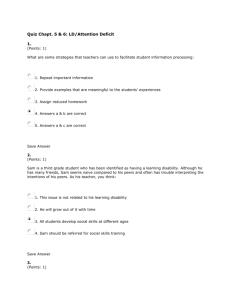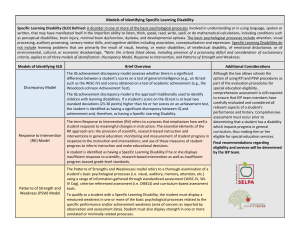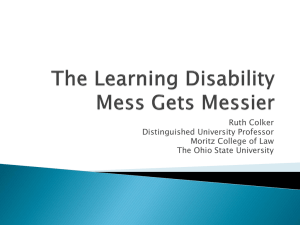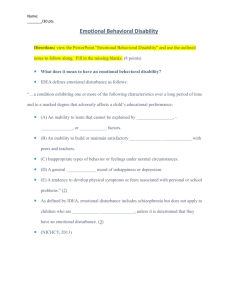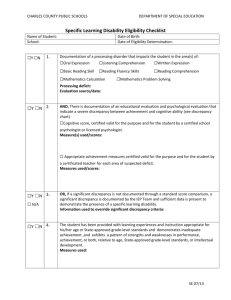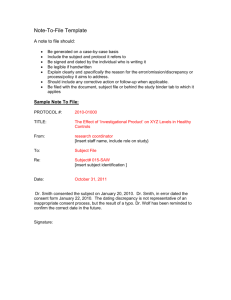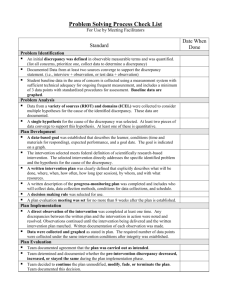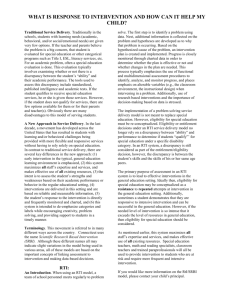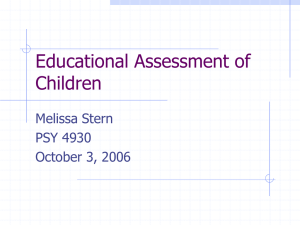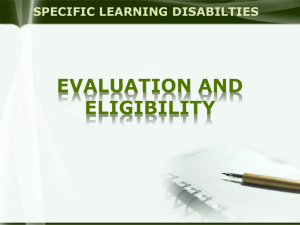The Learning Disability Mess (presentation at American University)
advertisement
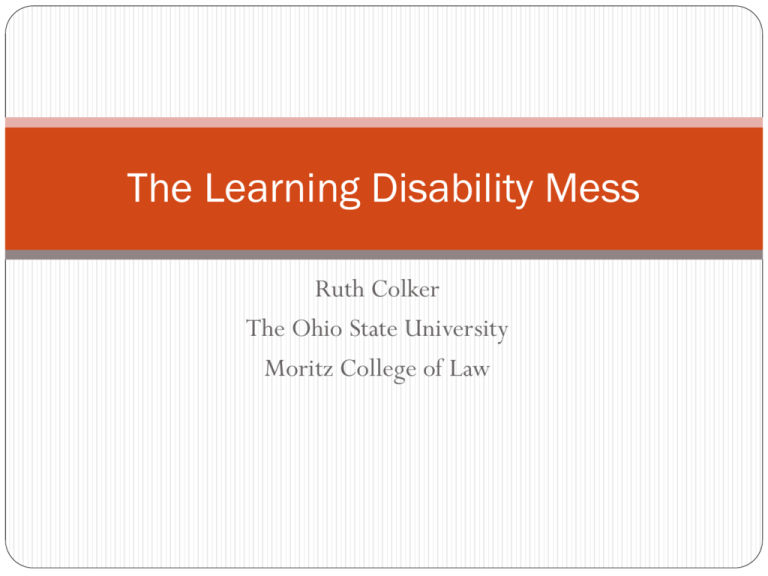
The Learning Disability Mess Ruth Colker The Ohio State University Moritz College of Law Education for All Handicapped Children Act “No one really knows what a learning disability is.” Then and Now 1975: The term ‘children with specific learning disabilities’ means those children who have a disorder in one or more of the basic psychological processes involved in understanding or in using language, spoken or written, which disorder may manifest itself in imperfect ability to listen, think, speak, read, write, spell, or do mathematical calculations. Such disorders include such conditions as perceptual handicaps, brain injury, minimal brain dysfunction, dyslexia, and developmental aphasia. Such term does not include children who have learning problems which are primarily the result of visual, hearing, or motor handicaps, of mental retardation, of emotional disturbance, or environmental, cultural, or economic disadvantage. Today: (A) In general. The term “specific learning disability” means a disorder in 1 or more of the basic psychological processes involved in understanding or in using language, spoken or written, which disorder may manifest itself in the imperfect ability to listen, think, speak, read, write, spell, or do mathematical calculations. (B) Disorders included. Such term includes such conditions as perceptual disabilities, brain injury, minimal brain dysfunction, dyslexia, and developmental aphasia. (C) Disorders not included. Such term does not include a learning problem that is primarily the result of visual, hearing, or motor disabilities, of mental retardation, of emotional disturbance, or of environmental, cultural, or economic disadvantage. 2004 Notwithstanding section 607(b), when determining whether a child has a specific learning disability as defined in section 602, a local educational agency shall not be required to take into consideration whether a child has a severe discrepancy between achievement and intellectual ability in oral expression, listening comprehension, written expression, basic reading skill, reading comprehension, mathematical calculation, or mathematical reasoning. Rampant Confusion Do school districts still need to identify a neuropsychological factor? Should all children who fall behind academically become eligible for services under IDEA? Should discrepancy model be abandoned entirely? How do these rules compare with recommendations of experts in the field? Proposed DSM-V A group of disorders characterized by difficulties in learning basic academic skills (currently or by history), that are not consistent with the person’s chronological age, educational opportunities, or intellectual abilities. Basic academic skills refer to accurate and fluent reading, writing, and arithmetic. Multiple sources of information are to be used to assess learning, one of which must be an individually administered, culturally appropriate, and psychometrically sound standardized measure of academic achievement. The disturbance in criterion A, without accommodations, significantly interferes with academic achievement or activities of daily living that require these academic skills State by State variation Discrepancy Model: Enormous variation, ranging from 1.0 to 2.0 in amount of discrepancy required for LD diagnosis. If child moves from Alabama to Mississippi, is likely to go from being classified as LD to not being classified as LD. RTI Approach: Iowa has the most permissive approach so that lowest 30 percent seem to get services. Georgia and Florida require students to meet BOTH discrepancy and RTI model. College Admissions Testing ADA regulations require deference to IDEA classification. But testing entities use rules that are entirely discrepancy based.
